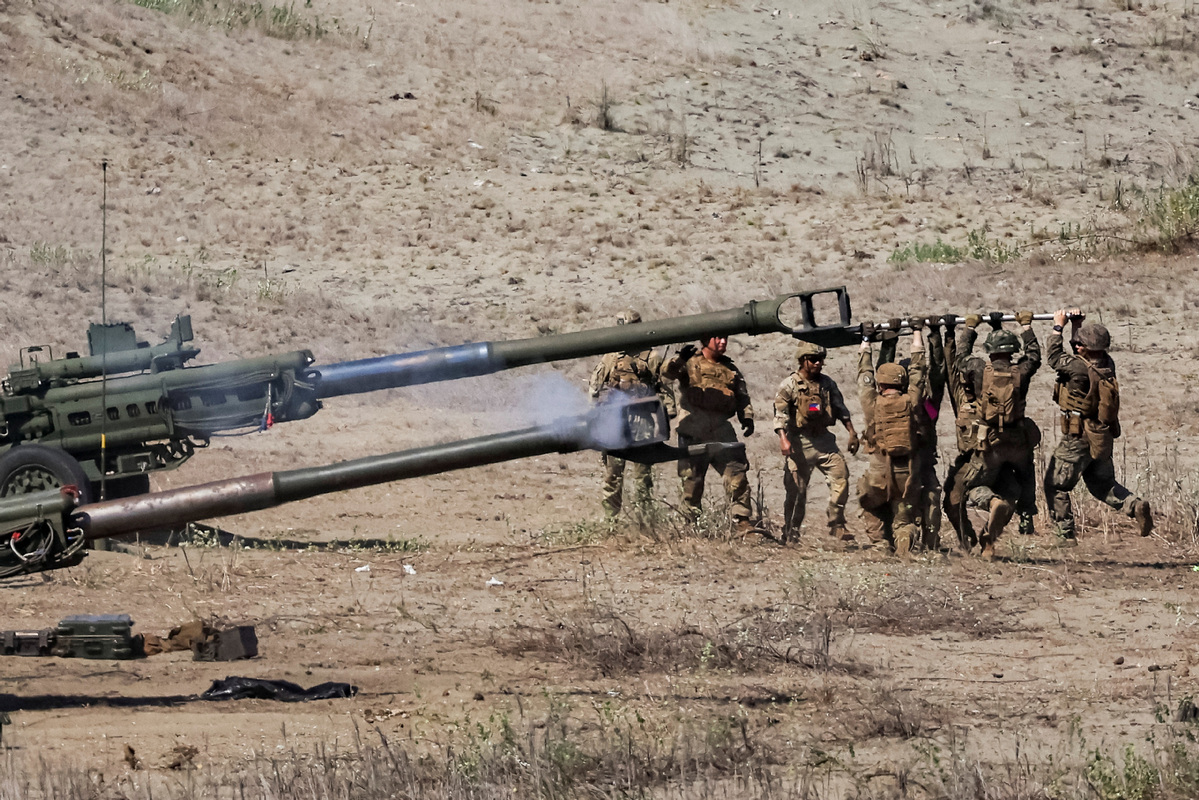
Threats to peace and stability in the Asia-Pacific are increasing as a result of the United States expanding its military presence in the region and persuading its allies to join it in its attempt to contain China.
The provocative steps the US has taken include staging more frequent and increasingly sophisticated military exercises in the South China Sea and its incessant efforts to meddle in the Taiwan question, with the secessionist forces on the island being willing pawns in its games. Just a day prior to the People's Liberation Army starting naval exercises in the waters around Taiwan in a show of its resolve in response to the separatism-inflected inauguration speech of the island's new leader, the US and the Dutch navies conducted bilateral operations in the South China Sea. They claimed the joint exercises were aimed at "maintaining stability and free use of vital sea lanes in the 'Indo-Pacific'".
READ MORE: PLA military drills 'legal, legitimate and necessary'
The joint operations were held shortly after US and Filipino forces launched their largest combat exercises in years last month. Running until early May, they involved more than 16,000 of their military personnel, with another 250 French and Australian personnel also taking part in them. In particular, the deployment of a US ground-launched missile system to the northern Philippines as part of the exercises has raised concerns about escalating tensions in the region and the growing risk of misjudgment and miscalculation among regional countries.
US "Indo-Pacific" Commander Admiral Samuel Paparo tried to pin the blame for the escalating tensions in the region on China, when he assumed office earlier this month, disingenuously claiming, "We must be ready to answer the PRC's increasingly intrusive and expansionist claims in the 'Indo-Pacific' region". This cannot but raise worries about what lies ahead in terms of Sino-US rivalry in the region, given that the US is upping its ante in challenging China's core interests concerning the Taiwan question and the South China Sea issues in the name of countering the alleged aggression from Beijing.
The acts of attempted intimidation that are unsettling the region are initiated by the US, not China, whose actions are necessary responses to the US' attempted coercion and bullying. China will not be cowed by the strong-arm muscle flexing of the US no matter how big a stick it wields.
And it is wielding a big stick. About 29 nations, 40 surface ships, 3 submarines, 14 national land forces, and more than 25,000 personnel will participate in the upcoming biennial Rim of the Pacific exercise the US has organized, which is scheduled to last from June 26 to Aug 2. Some China hawks in Washington and separatists in Taiwan have colluded to try to include the Chinese island's armed forces in the maritime drill. The National Defense Authorization Act, which US President Joe Biden signed into law in 2022, has already opened the possibility of inviting Taiwan to the RIMPAC exercises. Although Taiwan is yet to be invited, such a step, once taken, would undoubtedly draw a strong response from Beijing. Even without that provocative move, the naval exercises clearly do not have "inclusivity at its core", as the US Navy has claimed. If that was true, China would have been invited to participate, as it has been previously.
ALSO READ: Defense Minister Dong Jun to attend 21st Shangri-La Dialogue, visit Singapore
The increasing frequency, scale and complexity of the US-orchestrated military exercises in the Asia-Pacific indicate that the US would have no hesitation in taking more extreme and risky actions in pursuit of its geopolitical goal of containing China.
It is therefore to be hoped that the scheduled meeting between US Defense Secretary Lloyd Austin and Chinese Defense Minister Dong Jun at the Shangri-La Dialogue in Singapore this week will be taken as the opportunity for listening as well as talking. It is essential that the US realizes that its so-called competition with China, when manifested in the form of encircling military muscle, is a recipe for mishap, and thus misfortune, for all in the region.


